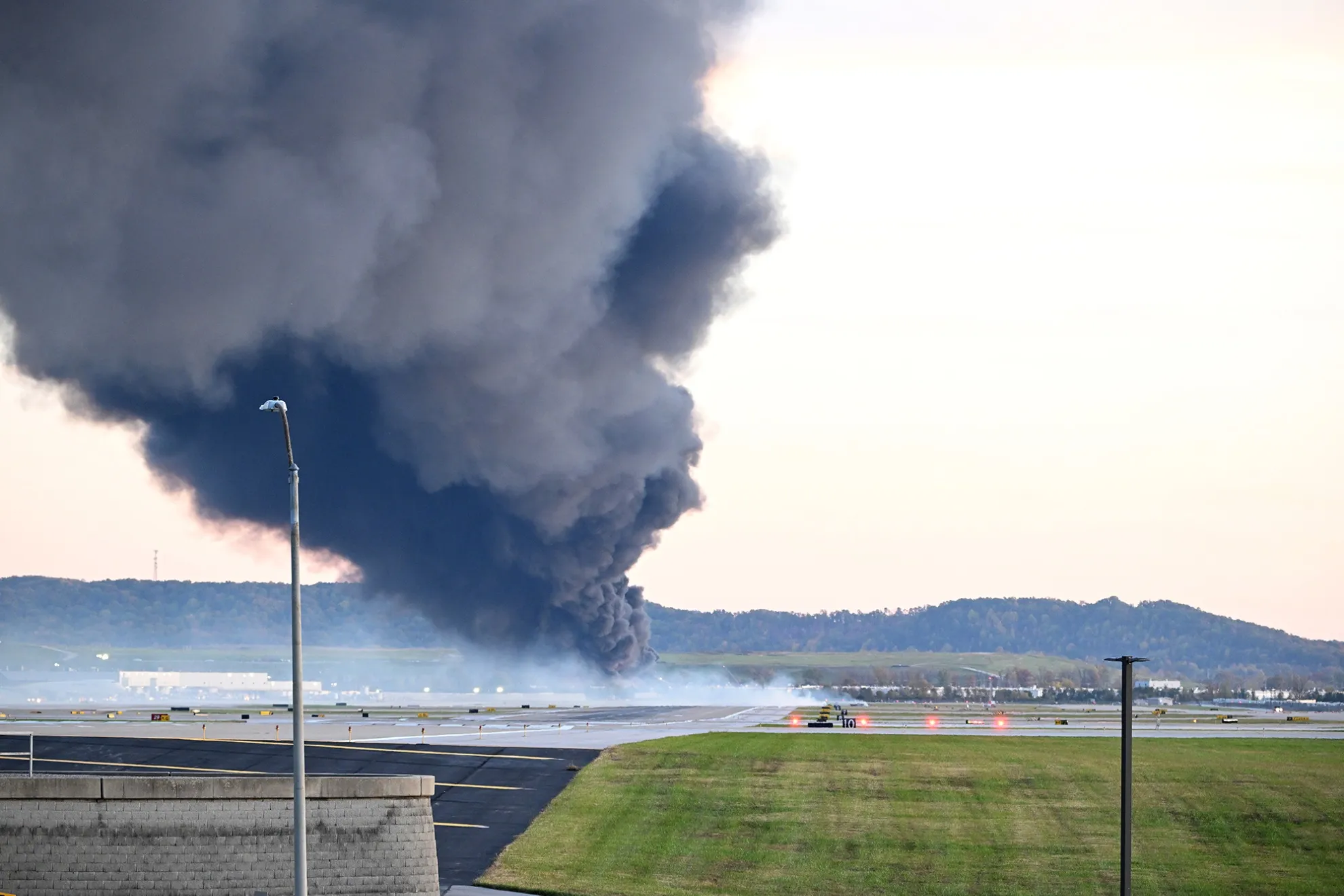What We Know About The Kentucky Plane Crash

Kentucky Plane Crash: Videos keep looping on feeds, a jet, plumes of smoke, a blast so bright it looks unreal. It happened fast. Too fast. A UPS cargo plane exploded into a fireball shortly after takeoff from Louisville Muhammad Ali International Airport on the late afternoon of Nov. 4, 2025, killing people on board and people on the ground. Authorities and investigators are still looking into the details.
What happened
The aircraft, a McDonnell Douglas MD-11 freighter operating as UPS Flight 2976, crashed just after departing Louisville for Honolulu. Kentucky Gov. Andy Beshear said all three crew members on board are thought to be dead. Local officials say at least 12 people lost their lives in the crash and the death toll is expected to climb. As the recovery teams are working on the scene, the numbers are being updated.
Multiple clips show the plane rolling down the runway with flames on its left wing and, chillingly, the left engine detaching from the wing as the aircraft was still accelerating for takeoff. Those images have been central to investigators’ early findings.
Investigators recovered the aircraft’s cockpit voice recorder and flight data recorder also known as the black boxes. Those devices are being analyzed in Washington by NTSB teams in which officiams sais say that analysis will take days, not hours
The footage, what people actually saw
A trucker’s dashcam and nearby security cameras show the MD-11 lifting a little, then flames erupting along the left wing. In other clips you can see what looks like the left engine on the grass near the runway separated from the wing. National Transportation Safety Board (NTSB) members have said that preliminary review of airport camera footage confirms an engine detached from the wing during the takeoff roll. That question is: why did the engine come off?
The point is, that’s not normal. Engines are bolted hard to the wings. For an engine to separate, something catastrophic whether structural failure, maintenance fault, extreme mechanical damage is usually involved.
Who died, the crew and victims on the ground
UPS confirmed the identities of the three crew members: Captain Richard Wartenberg, First Officer Lee Truitt, and International Relief Officer Captain Dana Diamond in Kentucky Plane Crash. Officials also say multiple people on the ground, workers at nearby industrial sites, drivers, and others were killed or suffered severe injuries.
Mayor Craig Greenberg and Andy Beshear have both addressed the city directly in recent briefings, offering condolences and pledging to support families and first responders. “My heart is with the families, friends and colleagues of all who were lost,” Mayor Greenberg wrote in a post as officials updated the death toll.
What investigators are focusing on
Early public remarks by NTSB members and investigators point to a few priorities:
- The detached engine — securing and examining that engine, and determining whether anything failed in the pylon or mounting hardware. Airport video appears to show the left engine separating; investigators found the engine near the airfield.
- Maintenance history — the MD-11 had been in San Antonio, Texas, for work weeks before the crash; NTSB said it will review records from that visit as part of the probe. Every maintenance action, every replaced bolt, every inspection will be scrutinized.
- Flight recorders — with the FDR and CVR in hand, investigators can read instrument data and hear cockpit audio. NTSB said the FDR recorded dozens of parameters (altitude, airspeed, engine data), and the CVR includes roughly two hours of cockpit conversation and sounds; both will be transcribed and analyzed. That’s where the concrete timeline usually appears.
An NTSB board member, Todd Inman, told reporters the final data showed the aircraft at about 475 feet and traveling roughly 210 mph before it went down; hard, specific numbers that underscore the suddenness of the loss.
People at nearby businesses said they heard the plane at a low roar, then saw flames. One worker who posted a phone video later told reporters he felt helpless: “We watched it. Nobody could do anything. It was like something out of a movie.” Local rescue teams and UPS employees have been pulling together, tending to survivors, searching the debris field and trying to identify victims. There are vigils. There are long lines of trucks parked nearby with drivers in stunned silence. There are family members waiting for updates. There’s grief. There’s anger. There’s a thousand micro-stories we’ll hear in the days ahead.
Damage and the scene
The crash carved a debris field through an industrial corridor just off the airport, sparking several secondary fires, including at a petroleum recycling facility. Flights at the airport were halted for hours as crews worked and investigators secured the area. Emergency teams from the Kentucky National Guard and federal agencies have assisted in on-site testing and recovery operations.
What to expect next
The NTSB will continue analyzing the black boxes and the recovered engine. They’ll also gather maintenance logs, personnel records, and video from every angle. That process takes time. We’ll get factual updates as tests and analyses finish and as investigators rule things in or out.
UPS has pledged support for employees and the community and released statements mourning the loss of its crew. The company said it’s cooperating fully with investigators.




